Cowon D20 - the heir to the legendary D2 +
In fact, until recently, the C2 was considered the heir of the legendary Cowon D2 +. But in March 2013, the South Korean company announced a new player that looks very similar to D2 + and is positioned as its successor. I will tell more about the new product under the cut.
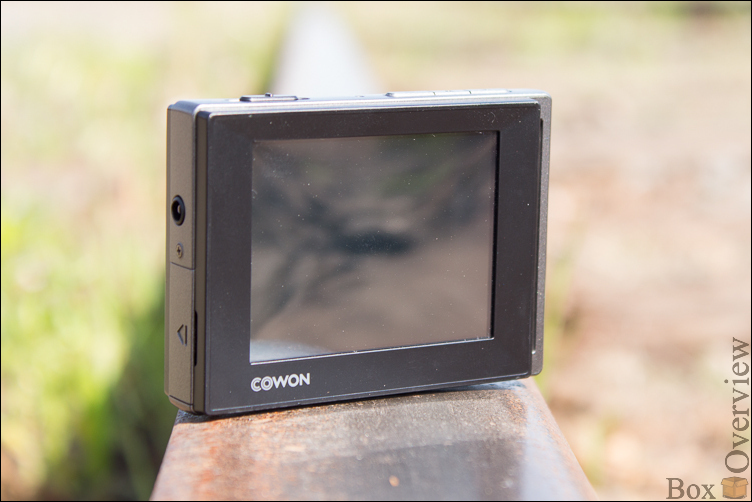
 2.5- inch resistive touch screen with a resolution of 320x240
2.5- inch resistive touch screen with a resolution of 320x240
 8/16/32 GB of internal memory + slot for SD / SDHC memory cards up to 32 GB
8/16/32 GB of internal memory + slot for SD / SDHC memory cards up to 32 GB
 Audio format support: MP3, WMA, OGG, FLAC, WAV, APE
Audio format support: MP3, WMA, OGG, FLAC, WAV, APE
 Output stage power 29 mW per channel with 16 ohm load
Output stage power 29 mW per channel with 16 ohm load
 Li-pol battery ( music - up to 90 hours , video - up to 13 hours)
Li-pol battery ( music - up to 90 hours , video - up to 13 hours)
 Dimensions: 78 x 55.4 x 16.6 mm
Dimensions: 78 x 55.4 x 16.6 mm
 Weight: 86 grams
Weight: 86 grams

Inside there is a sliding drawer with two sections. It is made so for a reason, because instead of throwing out the box, the manufacturer suggests using it as a pencil case for all kinds of small excess.

Actually the box itself is divided into two calves. In that smaller, the player itself is located. The second is a quick start guide (its full version is in the device’s memory), a USB cable, and standard Cowon headphones (as usual, are no good).

Sufficiently poor supply, especially the lack of a network charger.
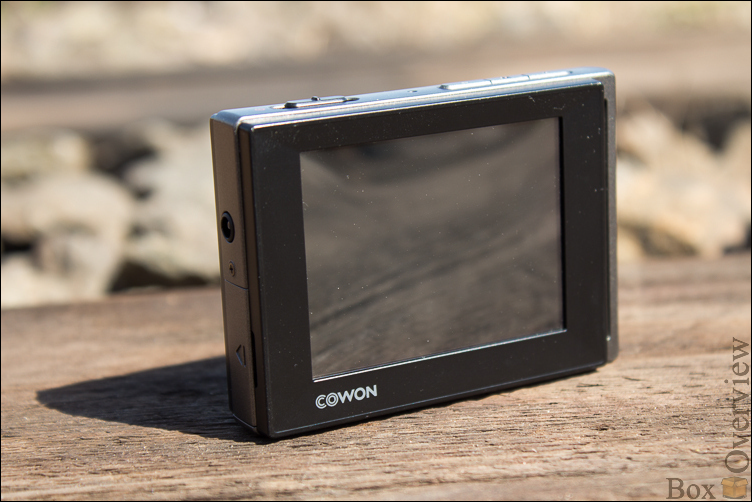
Body material - matte plastic. On the back there are several inscriptions informing us about the device model, its serial number and the amount of internal memory.
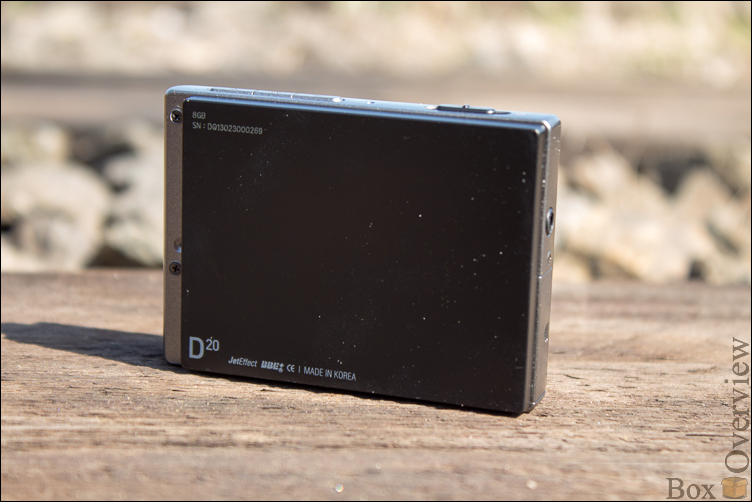
Upper edge (from left to right): two-position slider button (slide to the left - turn on / off the display, to the right (locked) - lock), microphone and player control buttons. The latter are separated by a small interval, which makes their identification real, but far from the most convenient. The course is short, but the tactile response is quite informative.
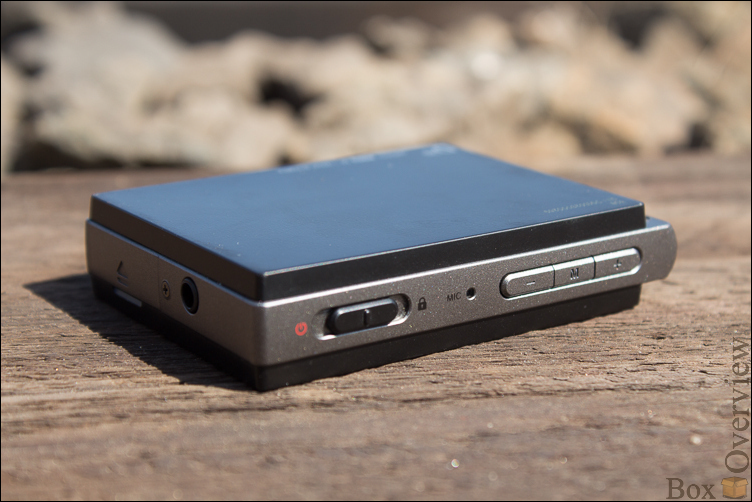
Below is an SD / SDHC memory card slot. Characteristics say that the maximum amount of memory cards is 32 GB, although according to some users, the player quietly “eats” the cards up to 128 GB.
On the left side there is an audio output and a cap under which there are hidden: a USB connection jack, a reset button and an EXT port (used to connect a video cable, a cable for linear recording or an external charger).
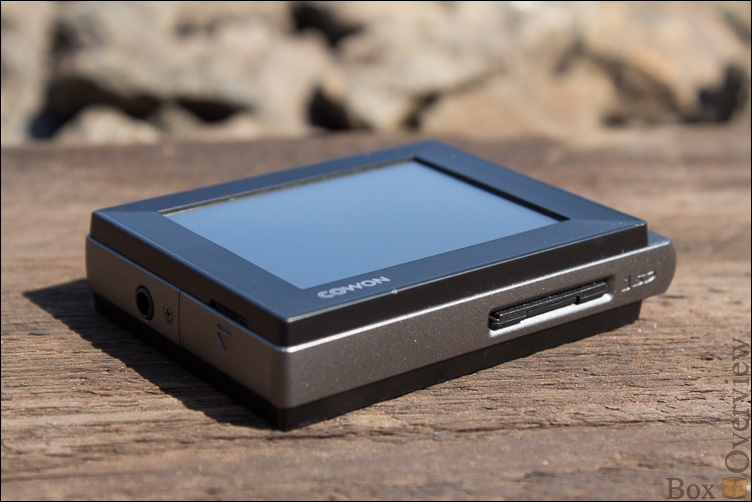
In general, the device is a kind of "brick", but nevertheless with sane weight and size indicators.
')
By the way, about the interface, it is based on the Flash technology and completely copies that of the Cowon C2, so the themes (skins) are completely compatible with them. Each switch-on begins with loading the player itself and initializing the memory card; all this takes about 20 seconds, so a sleep mode is provided.
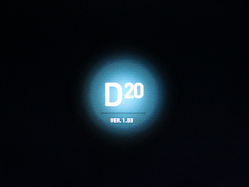
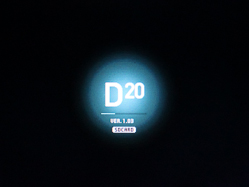
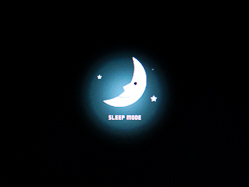
To design the menu, you can choose one of two themes to choose from. After downloading the first one, we get to the screen with an animated screensaver, of which 7 are available to choose from. The one that is set by default changes the image depending on the time of day. Swipe down moves to the first desktop. Given the screen resolution, the font could have been made bigger.
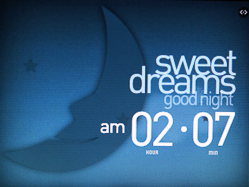
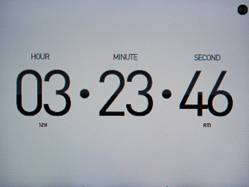
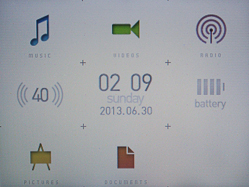
There are four such desktops in the main menu. Nothing can be customized, but even without this the arrangement of the elements seems quite logical.
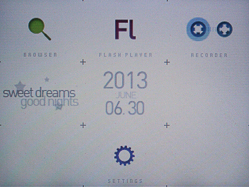
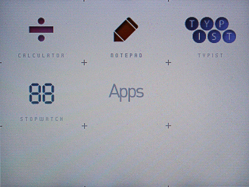
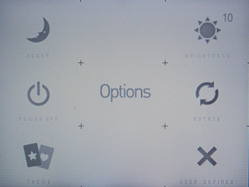
The second theme is more standard and endowed with a "human" font in the captions for the icons. By the way, one of its features is the ability to move them.



The main screen of the audio player is a progress bar on the background of a rotating vinyl record of the image on which changes depending on the cover of the album. A single tap on the display brings up a control menu consisting of several screens.


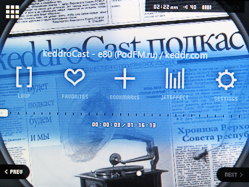
IMHO, I personally did not like this interface, and then that Flash UI, which I mentioned several paragraphs earlier, comes into force. In the Cowonworld community, there is a fairly large number of skins for the audio player, and if not all of them have the perfect interface and beauty, but still interesting things come across. I settled on the topic - TURN Music Flash UI .
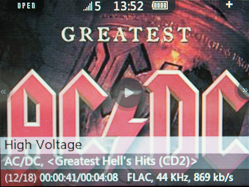


In order to install a new theme you need to download the archive with the music.svf file and unpack it along the path System / Flash UI. It remains only to disconnect the USB cable and turn on the player. PROFIT! In the same way, you can customize the main menu. In order to roll back to the stock theme, simply delete the music.svf file in the directory you previously placed. I will not talk fully about the possibilities of this topic (you can read the link or, if you own the player, check it yourself), but I would like to mention the organization of an additional menu that contains the basic settings. You can go to it by tap on "+".

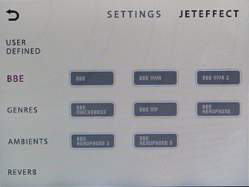
A separate application called a browser is responsible for navigating through the device’s memory. There are two ways to get into it. The first is from the main menu (a trimmed version without favorite tracks and bookmarks). In this case, the browser consists of a search page and track navigation. To go up a level, delete a track or add it to your favorites, you can also call the tap control menu by the icon in the upper right corner.


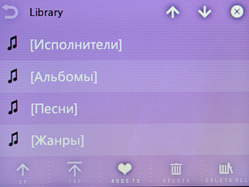
The second one is from the audio player by clicking on “Open”. Then add two more additional pages with your favorite tracks and bookmarks.

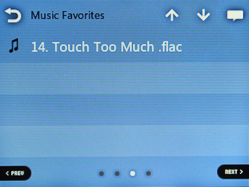

All basic settings are located on two pages and consist of 7 categories - JetEffect 5, display, time, music, video, recording and system. The most extensive is the category with effects, there are as many as six pages (I don’t understand why, but many like it). It is followed by setting up a system with four pages, so it’s far from the best idea to describe it all here, and if you are interested in something, I advise you to read the instructions or ask me.


There was a place for radio with voice recorder. The first works without headphones and allows you to record the air, although the reception quality is frankly poor, even with headphones connected.
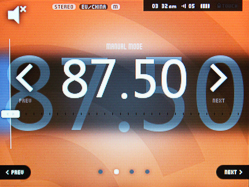
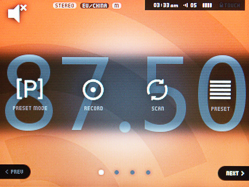
There are no complaints about the recorder. It is possible to record sound from a microphone or line-out.

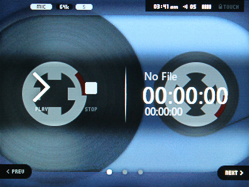

Of the additional tools worth noting: a calculator, a stopwatch and a notebook for handwriting.
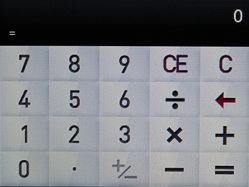
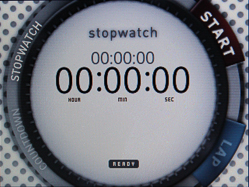
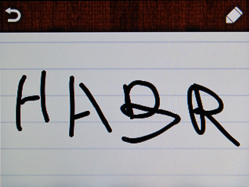
An application with a funny name Typist is used to create reminders.
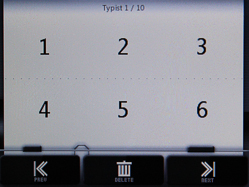
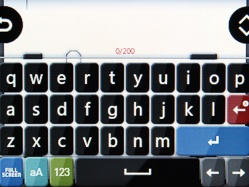
Everything you need is there, the speed of work is also on the level. Pleased customization capabilities, through which you can customize the interface for yourself.
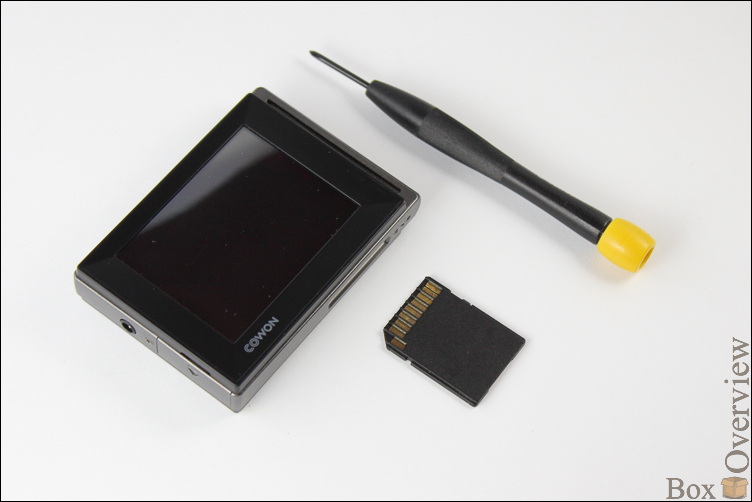
The next step is to unscrew the three screws around the perimeter of the device.

Armed with a credit card or a pick, snap off the plastic fasteners on the back cover.
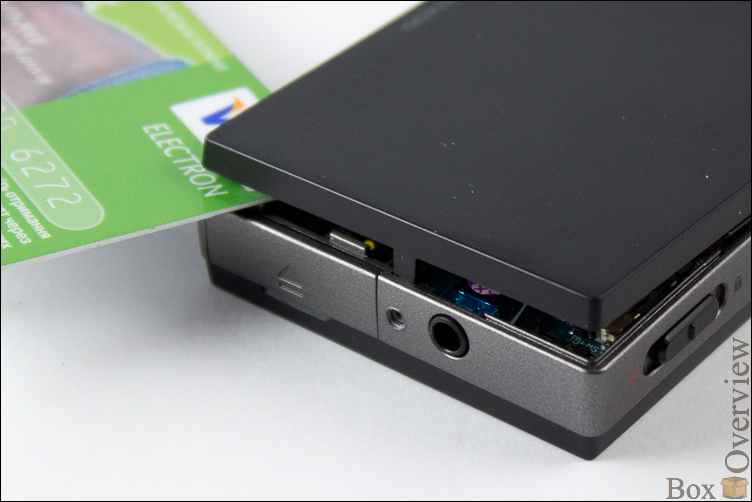
We slightly raise the cover in the area of the audio output and move it towards ourselves. Note, the battery is in this very cover, respectively, should not get carried away, because you can damage the power cord.
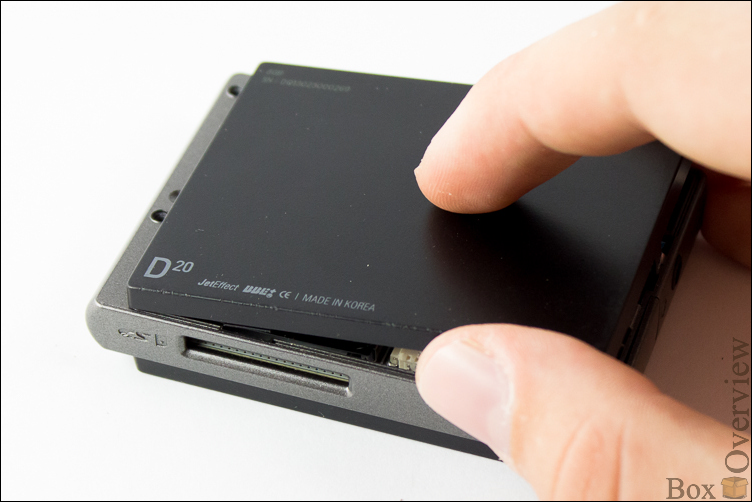
Remove the battery, simultaneously disconnecting the power cord. Here we can see the overall layout of the board. In case you bother to bathe your device, a wet sensor is present.

In the stated specifications, the manufacturer for some reason did not indicate the capacity of the battery, but it is very impressive here, both in terms of size and capacity, which is 1600 mAh (5.9 W • h) at a voltage of 3.7V.
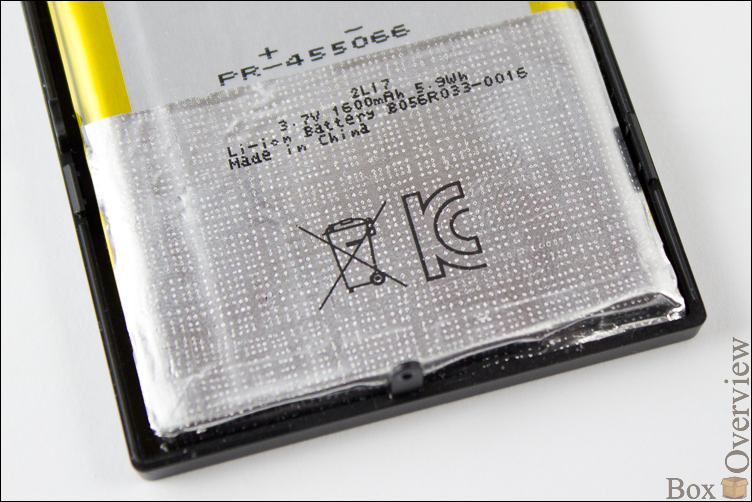
Turning off the speaker. You can not connect back, because the sense of it is zero. :)
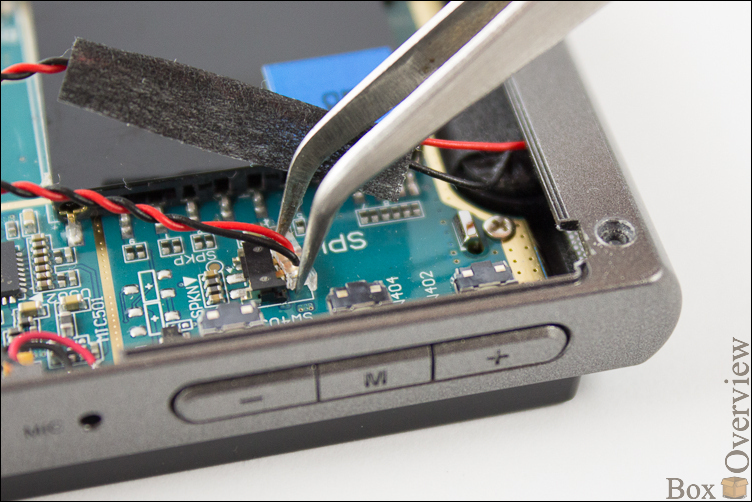
Unscrew the two screws in the area of the memory card slot.
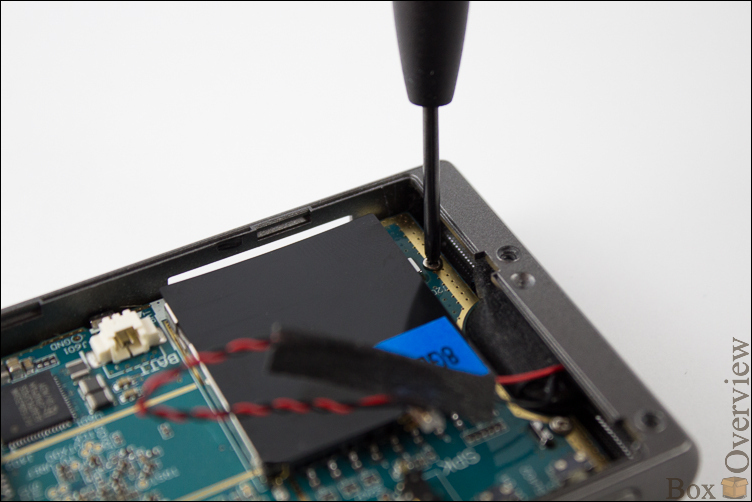
And again, armed with a credit card. At this time, snap off the plastic fasteners of the front cover.
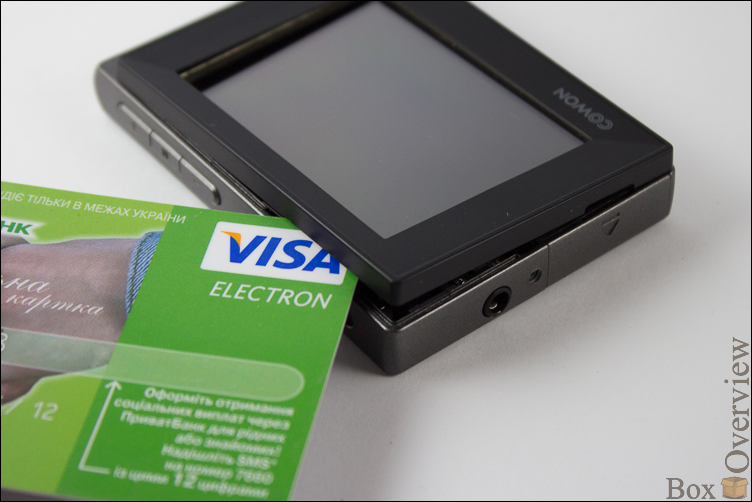
Actually, here we come to the final stage. It remains only to get a fee from the base of the case, although it will rather fall out itself, since nothing holds it anymore.
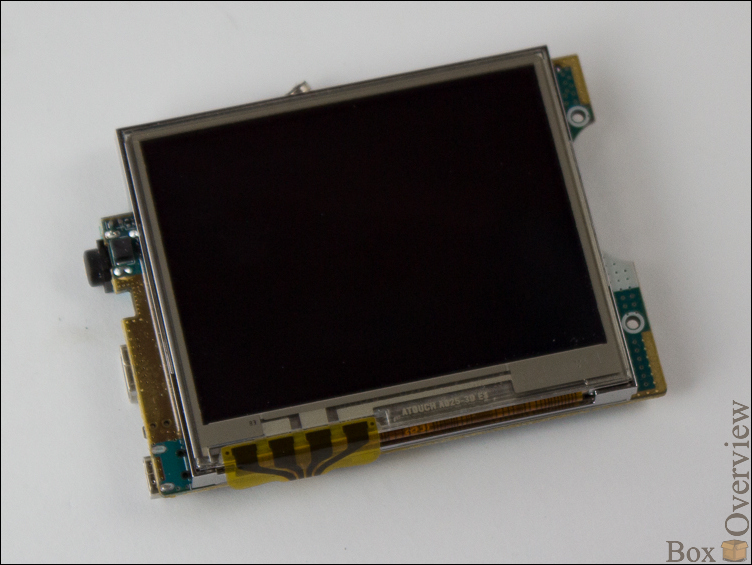
I did not dare to remove the display from the motherboard (in fact, I simply forgot, but I did not want to reassemble), so as not to damage the cables leading to it. I think in the case of a replacement, it will not be difficult, you just need to loosen the fasteners from the back of the board.
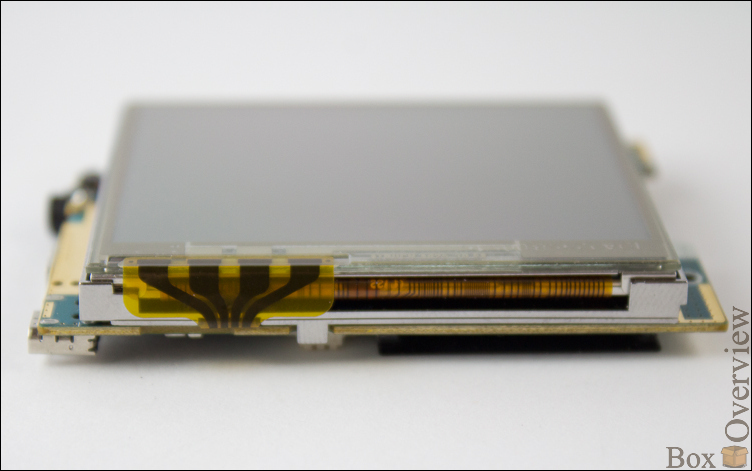
For the reproduction of sound meets the chip produced by Wolfson - WM8690G , exactly the same as in Cowon C2. The second chip, PCF50633NH, manufactured by STMicroelectronics, is responsible for organizing power for all components of the player and charging the Li-pol battery.

Since I did not dare to remove the display, I couldn’t see that the device was “driving”, so the theme of the boobs can be considered not disclosed. I will try to fix it in subsequent articles.

Putting it back in reverse order. In general, the device can be easily disassembled / assembled, there are no complaints about soldering or accessories. Everything is done with high quality.
On the other hand, the power of 29 mW per channel is enough for most headphones of the lower and middle price ranges, be it the SoundMagic E10 or the rebar Rock It Sounds R-20 . By the way, he even copes with VSonic GR-07, leaving a small margin on volume.
Specifically, the sound of the player itself depends primarily on the headphones. Therefore, here the ideal option would be to take your favorite headphones and go to the nearest personal audio store.
The player eats all the most common audio formats, including FLAC and APE. The only thing that upsets is the lack of support for the cue sheet, despite the fact that I have almost the entire library built from albums with one file split into tracks using cue. Therefore, one beautiful summer evening was spent on sawing albums. This can be done using the CUETools program.
In terms of autonomy. The 90 hours claimed by the manufacturer can only be obtained in ideal conditions, but in fact, personally, my device lived 73 hours when playing music in lossless formats. Such an indicator makes it possible to completely forget about charging the player for at least a month (2-2.5 hours of music playback per day).
 Battery life
Battery life
 Good sound quality
Good sound quality
 Body materials, design
Body materials, design
 The presence of a slot for memory cards
The presence of a slot for memory cards
 A huge number of effects and "improvers"
A huge number of effects and "improvers"
 No support for .cue
No support for .cue
 Lack of network memory in the standard package
Lack of network memory in the standard package
 Lower output power compared to its predecessor
Lower output power compared to its predecessor
 Product on the manufacturer's website
Product on the manufacturer's website
 Section dedicated to the player in the community cowonworld.ru
Section dedicated to the player in the community cowonworld.ru
 Talk on player.ru
Talk on player.ru
If you do not have an account on Habrahabr, you can read and comment on our articles on BoxOverview.com

 2.5- inch resistive touch screen with a resolution of 320x240
2.5- inch resistive touch screen with a resolution of 320x240 8/16/32 GB of internal memory + slot for SD / SDHC memory cards up to 32 GB
8/16/32 GB of internal memory + slot for SD / SDHC memory cards up to 32 GB Audio format support: MP3, WMA, OGG, FLAC, WAV, APE
Audio format support: MP3, WMA, OGG, FLAC, WAV, APE Output stage power 29 mW per channel with 16 ohm load
Output stage power 29 mW per channel with 16 ohm load Li-pol battery ( music - up to 90 hours , video - up to 13 hours)
Li-pol battery ( music - up to 90 hours , video - up to 13 hours) Dimensions: 78 x 55.4 x 16.6 mm
Dimensions: 78 x 55.4 x 16.6 mm Weight: 86 grams
Weight: 86 gramsA complete table of specifications from the official website of the manufacturer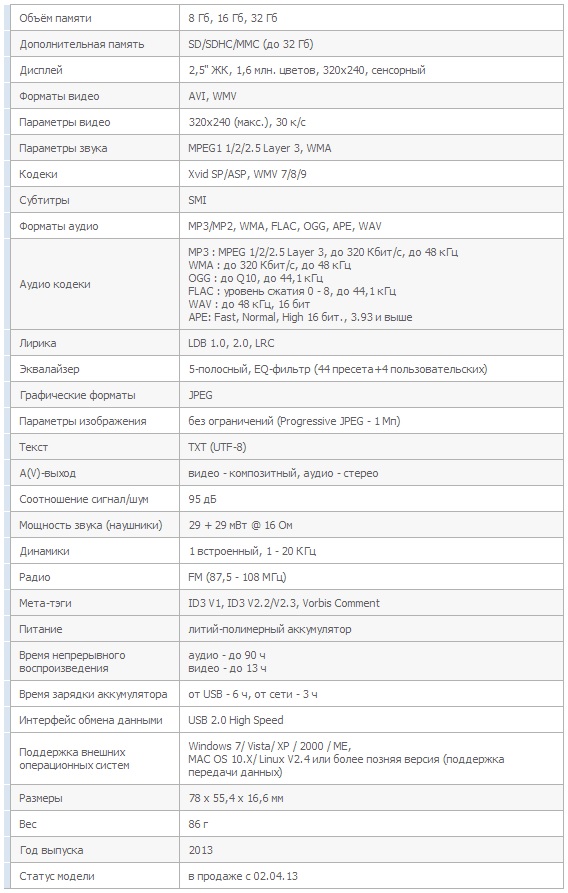

► Packing and packaging
The player is delivered in a box of raw cardboard already accustomed to the latest products of the company.
Inside there is a sliding drawer with two sections. It is made so for a reason, because instead of throwing out the box, the manufacturer suggests using it as a pencil case for all kinds of small excess.

Actually the box itself is divided into two calves. In that smaller, the player itself is located. The second is a quick start guide (its full version is in the device’s memory), a USB cable, and standard Cowon headphones (as usual, are no good).

Sufficiently poor supply, especially the lack of a network charger.
► Appearance and controls
It looks like D2 + poured, but now instead of a slot for the stylus there is a net covering the absolutely unnecessary speaker here, which, moreover, doesn’t sound much, compared to most modern smartphones and other portable devices.
Body material - matte plastic. On the back there are several inscriptions informing us about the device model, its serial number and the amount of internal memory.

Upper edge (from left to right): two-position slider button (slide to the left - turn on / off the display, to the right (locked) - lock), microphone and player control buttons. The latter are separated by a small interval, which makes their identification real, but far from the most convenient. The course is short, but the tactile response is quite informative.

Below is an SD / SDHC memory card slot. Characteristics say that the maximum amount of memory cards is 32 GB, although according to some users, the player quietly “eats” the cards up to 128 GB.
On the left side there is an audio output and a cap under which there are hidden: a USB connection jack, a reset button and an EXT port (used to connect a video cable, a cable for linear recording or an external charger).

In general, the device is a kind of "brick", but nevertheless with sane weight and size indicators.
► Display, interface and its modifications
Display sabzh touch, 2.5-inch with a resolution of 320 by 240 pixels. The sensor is resistive, but you should not immediately recall the last century, the interface is well adapted for working with fingers, the sensitivity is also at the level. In the pros, you can also record the ability to control any subject.')
By the way, about the interface, it is based on the Flash technology and completely copies that of the Cowon C2, so the themes (skins) are completely compatible with them. Each switch-on begins with loading the player itself and initializing the memory card; all this takes about 20 seconds, so a sleep mode is provided.



To design the menu, you can choose one of two themes to choose from. After downloading the first one, we get to the screen with an animated screensaver, of which 7 are available to choose from. The one that is set by default changes the image depending on the time of day. Swipe down moves to the first desktop. Given the screen resolution, the font could have been made bigger.



There are four such desktops in the main menu. Nothing can be customized, but even without this the arrangement of the elements seems quite logical.



The second theme is more standard and endowed with a "human" font in the captions for the icons. By the way, one of its features is the ability to move them.



The main screen of the audio player is a progress bar on the background of a rotating vinyl record of the image on which changes depending on the cover of the album. A single tap on the display brings up a control menu consisting of several screens.



IMHO, I personally did not like this interface, and then that Flash UI, which I mentioned several paragraphs earlier, comes into force. In the Cowonworld community, there is a fairly large number of skins for the audio player, and if not all of them have the perfect interface and beauty, but still interesting things come across. I settled on the topic - TURN Music Flash UI .



In order to install a new theme you need to download the archive with the music.svf file and unpack it along the path System / Flash UI. It remains only to disconnect the USB cable and turn on the player. PROFIT! In the same way, you can customize the main menu. In order to roll back to the stock theme, simply delete the music.svf file in the directory you previously placed. I will not talk fully about the possibilities of this topic (you can read the link or, if you own the player, check it yourself), but I would like to mention the organization of an additional menu that contains the basic settings. You can go to it by tap on "+".


A separate application called a browser is responsible for navigating through the device’s memory. There are two ways to get into it. The first is from the main menu (a trimmed version without favorite tracks and bookmarks). In this case, the browser consists of a search page and track navigation. To go up a level, delete a track or add it to your favorites, you can also call the tap control menu by the icon in the upper right corner.



The second one is from the audio player by clicking on “Open”. Then add two more additional pages with your favorite tracks and bookmarks.



All basic settings are located on two pages and consist of 7 categories - JetEffect 5, display, time, music, video, recording and system. The most extensive is the category with effects, there are as many as six pages (I don’t understand why, but many like it). It is followed by setting up a system with four pages, so it’s far from the best idea to describe it all here, and if you are interested in something, I advise you to read the instructions or ask me.


There was a place for radio with voice recorder. The first works without headphones and allows you to record the air, although the reception quality is frankly poor, even with headphones connected.


There are no complaints about the recorder. It is possible to record sound from a microphone or line-out.



Of the additional tools worth noting: a calculator, a stopwatch and a notebook for handwriting.



An application with a funny name Typist is used to create reminders.


Everything you need is there, the speed of work is also on the level. Pleased customization capabilities, through which you can customize the interface for yourself.
► Insides, maintainability
We analyze the device. We will inspect the viscera, test maintainability. The first step is to remove the memory card and prepare a Phillips screwdriver (# 00).
The next step is to unscrew the three screws around the perimeter of the device.

Armed with a credit card or a pick, snap off the plastic fasteners on the back cover.

We slightly raise the cover in the area of the audio output and move it towards ourselves. Note, the battery is in this very cover, respectively, should not get carried away, because you can damage the power cord.

Remove the battery, simultaneously disconnecting the power cord. Here we can see the overall layout of the board. In case you bother to bathe your device, a wet sensor is present.

In the stated specifications, the manufacturer for some reason did not indicate the capacity of the battery, but it is very impressive here, both in terms of size and capacity, which is 1600 mAh (5.9 W • h) at a voltage of 3.7V.

Turning off the speaker. You can not connect back, because the sense of it is zero. :)

Unscrew the two screws in the area of the memory card slot.

And again, armed with a credit card. At this time, snap off the plastic fasteners of the front cover.

Actually, here we come to the final stage. It remains only to get a fee from the base of the case, although it will rather fall out itself, since nothing holds it anymore.

I did not dare to remove the display from the motherboard (in fact, I simply forgot, but I did not want to reassemble), so as not to damage the cables leading to it. I think in the case of a replacement, it will not be difficult, you just need to loosen the fasteners from the back of the board.

For the reproduction of sound meets the chip produced by Wolfson - WM8690G , exactly the same as in Cowon C2. The second chip, PCF50633NH, manufactured by STMicroelectronics, is responsible for organizing power for all components of the player and charging the Li-pol battery.

Since I did not dare to remove the display, I couldn’t see that the device was “driving”, so the theme of the boobs can be considered not disclosed. I will try to fix it in subsequent articles.

Putting it back in reverse order. In general, the device can be easily disassembled / assembled, there are no complaints about soldering or accessories. Everything is done with high quality.
► Sound
There is no need to wait for something extraordinary from the WM8960G chip, in terms of sound quality, it is not far from the solutions used in modern top-end smartphones, for example, WM5102 in the Samsung Galaxy S4.On the other hand, the power of 29 mW per channel is enough for most headphones of the lower and middle price ranges, be it the SoundMagic E10 or the rebar Rock It Sounds R-20 . By the way, he even copes with VSonic GR-07, leaving a small margin on volume.
Specifically, the sound of the player itself depends primarily on the headphones. Therefore, here the ideal option would be to take your favorite headphones and go to the nearest personal audio store.
► Operation and autonomy
Given the weight and dimensions of Cowon D20, it can be used as an everyday player, as well as in sports. I practice the latter on a permanent basis, as a result of which, on one of the runs, the apparatus fell from a meter height onto the asphalt. It turned out just a few scratches on the back cover.The player eats all the most common audio formats, including FLAC and APE. The only thing that upsets is the lack of support for the cue sheet, despite the fact that I have almost the entire library built from albums with one file split into tracks using cue. Therefore, one beautiful summer evening was spent on sawing albums. This can be done using the CUETools program.
In terms of autonomy. The 90 hours claimed by the manufacturer can only be obtained in ideal conditions, but in fact, personally, my device lived 73 hours when playing music in lossless formats. Such an indicator makes it possible to completely forget about charging the player for at least a month (2-2.5 hours of music playback per day).
► Tviki
- By default, the ± buttons control the volume change, with no hardware buttons for switching tracks. In order to reassign them to switch tracks, you need to go to Settings -> System and on the second page change the value from “Volume” to “FF / REW”.
- In Europe, there is a law on limiting the volume of music players at 80 dB. Perhaps this is correct, but in this way many users lose additional power, which can help to “shake” more serious headphones. To get rid of this restriction, you need to delete the Param.cfg file from the device’s memory (it is located in the System folder). The next time you turn on the device on the region selection page, you need to point to the item "Non-European Union", as a result of which the restriction will be lifted.
► Results
Cowon D20 is a portable audio player, a kind of heir to the D2 + model. Its characteristic feature is long battery life combined with good sound quality. And if all you need from the player is listening to music, then feel free to recommend this device for purchase!Advantages and disadvantages
 Battery life
Battery life Good sound quality
Good sound quality Body materials, design
Body materials, design The presence of a slot for memory cards
The presence of a slot for memory cards A huge number of effects and "improvers"
A huge number of effects and "improvers" No support for .cue
No support for .cue Lack of network memory in the standard package
Lack of network memory in the standard package Lower output power compared to its predecessor
Lower output power compared to its predecessor► Cost
The player is on the market in 3 versions with 8, 16 or 32 GB of user memory, the price for the youngest starts from the mark of 4290 rubles in Russia and 1,452 hryvnia in Ukraine. I advise you to purchase from official distributors.► Related Links
If you do not have an account on Habrahabr, you can read and comment on our articles on BoxOverview.com
Source: https://habr.com/ru/post/173603/
All Articles